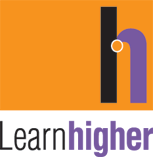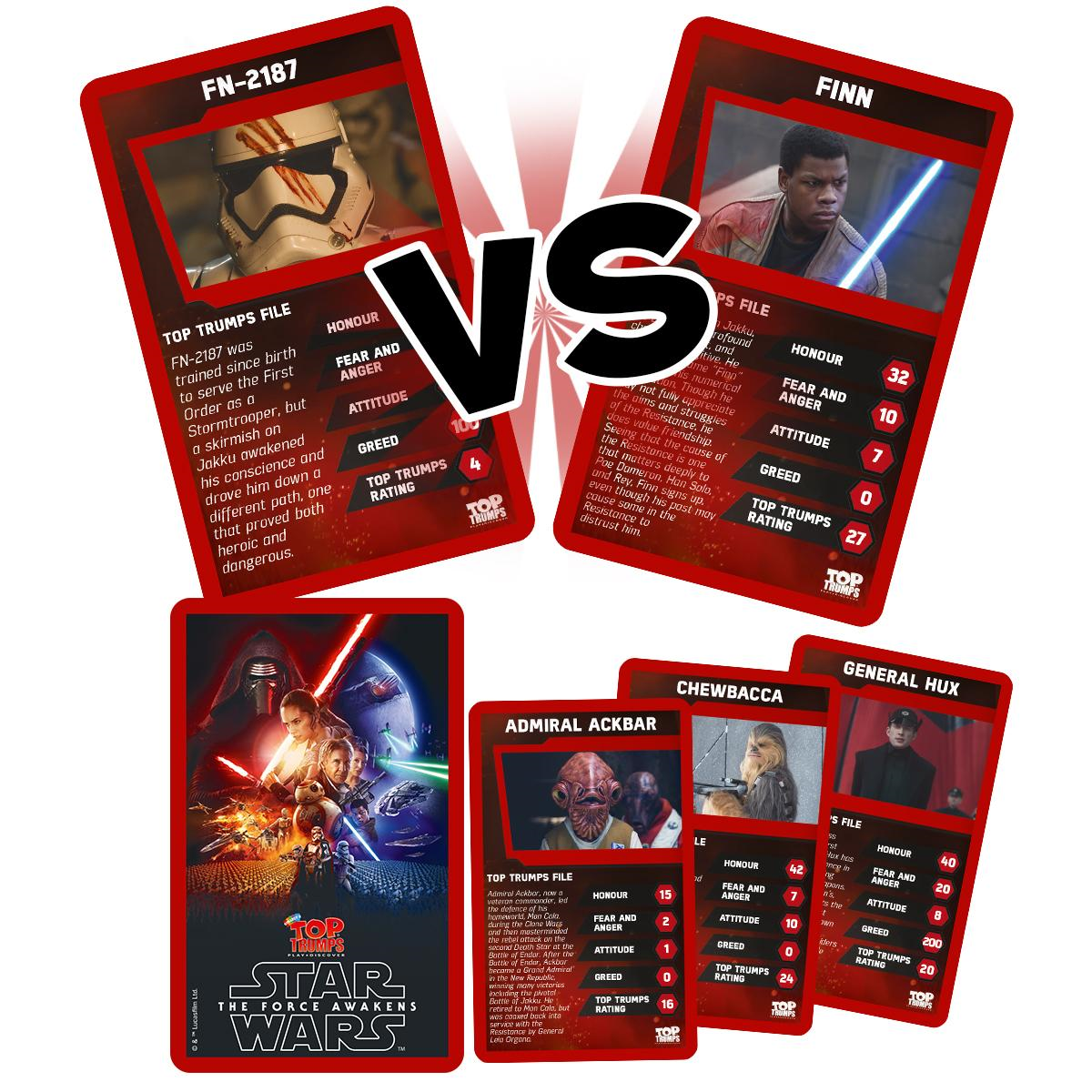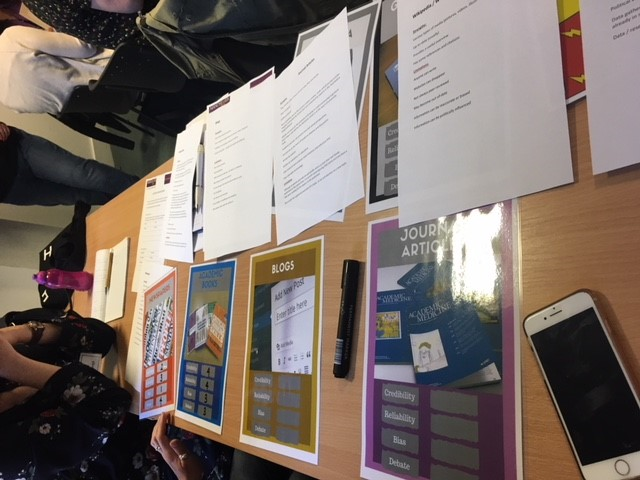This blog post is brought to you by Craig Morley, a Learning Developer at the University of Manchester Library, whose Source Top Trumps resource won the LearnHigher prize draw at the ALDinHE 2019 Annual Conference – and which we are really happy to celebrate during this alternative version of the ALDinHE Conference: LD@3!
We open with a brief overview of LearnHigher, indicating how you might offer your own resources for consideration.
That LearnHigher experience
Learn Higher supports learning developers by promoting and facilitating the development and dissemination of high quality, peer-reviewed resources for learning development. To further support our successful resource authors we invite those with high ratings to provide a paper on their resource. One of these is then chosen by the working group to be submitted as the LearnHigher entry for inclusion in the ALDinHE newsletter and Take5 blog.

Dr Craig Morley’s Top Trumps resource is designed to introduce students to a variety of ‘information sources’ – from which to access information, learn and complete their assignments – and to begin to think critically about these sources. It was approved by the LearnHigher panel for acceptance onto the site as we felt that adding some gamification to learning development sessions was a very positive step that would engage students in their learning in a fun and active manner.
You can do it too
The Learn Higher site offers a vast range of free learning development (LD) resources submitted by LDrs for use by LDrs. Having a resource accepted to Learn Higher not only engages you in the LD community but can also be used towards gaining your CEP/CELP accreditation (http://www.aldinhe.ac.uk/development/). Submitting a resource is easy, just click on the ‘Submit Resource’ tab on the Learn Higher webpage (http://www.learnhigher.ac.uk/submit-resource/) and follow the guidance.
(The LearnHigher Working Group)
Craig’s ‘Source Top Trumps’
Craig is a Learning Developer at the University of Manchester. He has worked in higher education for over nine years in a variety of positions, teaching both history and learning development across three institutions. Craig is an editor of the Journal of Learning Development in Higher Education, Chair of the North West Academic Libraries (NoWAL) Academic Skills Community of Practice and Fellow of the Higher Education Academy. Craig can be contacted at craig.morley@manchester.ac.uk
Why and how I decided to develop this particular resource
I decided to develop this resource as a way to make introducing the basics of information literacy (and the potential value of utilising a range of different sources of information) to new students more fun – for both students and myself!
As learning developers and librarians, introducing students to the different types of sources they will encounter throughout their studies is at the heart of our early interactions with new students. Early requests from academics to embed library inductions or referencing support into the curriculum tend to include a focus on what sources students should be consulting in their disciplines. For me, this makes these sessions doubly important. Firstly, it is our chance to make a good first, and lasting, impression on students. The better job we do, the more likely students are to see us as a genuine and credible source of expert support throughout their time at university. Secondly, the better students understand the sources they can use, the better their prospects in assignments.
From my own experience, it is easy for this to become didactic, with interaction limited to little more than asking students to draw up lists of pros and cons of each type of source. I know this is not the case for everyone and I have seen some really great examples of activities that can be used to introduce sources – LearnHigher, Journal of Learning Development in Higher Education, and the ALDinHE annual conference are all fantastic spaces to find new ideas. But, I always found delivering these sessions quite challenging!
Gaming the system
So, during the summer I spent a lot of time wracking my brain about how I could improve my approach to introducing sources. Sessions had already been requested and booked in for September and October, so I had to think fast! Luckily, I had been reading a lot about playful learning and gamification around the same time, which sparked my imagination and brought back some childhood memories! Top Trumps, with their rankings and battles, seemed perfectly suited to get students thinking about which sources were most appropriate and academically credible for their own research. Battling journal articles, book chapters and newspapers may not be as exciting as battling Star Wars characters or football players – but, hey-ho, I decided to give it a go (rhyme intended!).

First on the to-do list was to create the Top Trump cards themselves. I used Canva for this. I am not a creative person in the slightest – drawing stick-people is the height of my artistic talents! Luckily, Canva makes putting all sorts of designs together relatively easy. Once I had a template, it was straight-forward enough to make different cards for different sources. The ‘basic’ deck of Source Top Trumps can be seen below. I also created an ‘information pack’ for each card, which had background information on the strengths and weaknesses of the sources. Students used these packs to decide how to rate the different sources.

Resource usefulness
My own suggested steps for how to use the Top Trumps can be found on the resource page in LearnHigher. Although, *spoiler alert*, that is not the only way they can/have been used (more on that later…).
I have used the Source Top Trumps with first year Nursing, Midwifery and English Literature students, adapting the deck slightly for each group. I believe using the Top Trumps made these sessions much more effective and enjoyable than ones I had led in the previous year. They completely changed the focus of the session from teacher-centred to student-centred. Rather than being told by an ‘outsider’ what sources they should be using in their own disciplinary research, students used the Top Trumps to identify which sources they should prioritise themselves. My own role was changed from directly leading the students to the ‘correct’ answers to facilitating students to find their own answers. My hope was that by playing a game to discover the pros and cons of different sources and battling sources against each other, the students would be more likely to search out and use the ‘better’ sources in their own research and work going forward.
One of my worries was that while I had been able to use Top Trumps for small-groups, would they work with larger groups? Luckily, my colleague, Francesca Robinson at UCLan, found a way to answer this (Thanks, Fran!). Fran used Google Forms to let students enter joint, agreed-upon scores for each source type. An example of the Google Form she used can be seen here. I think this shows how adaptable the Top Trumps can be with a little imagination – they can be used with small and large groups both online and offline.

Tips for running the activity
A few tips I’d share from using the resource!
- Confidence – like with any playful learning it’s important to ‘sell’ the activity to get students involved.
- Relaxed – it’s important to be able to laugh at yourself and the activity itself as part of the fun: don’t take things too seriously!
- Know the rules – any good ‘dungeon master’ needs to be on hand to solve any disputes or questions. Things can get competitive!
Impact and Feedback
I haven’t done any detailed evaluation of the long-term usefulness of the resource yet. However, from informal feedback I received from students and lecturers, students seemed to enjoy using the Top Trumps and found the activity useful in preparing for upcoming assignments. The Top Trumps were also received well by colleagues who had a go at playing the game at an ALDinHE regional symposium on Innovative Approaches to Learning Development at the University of Salford in July.
“Enjoyed learning about the card games. Will definitely be looking at
using Top Trumps or a version of it in my sessions.”
“Excellent-will be using Top Trumps and Faculty Fortunes sometime
soon!”
As with most elements of playful learning, some students found the Top Trumps activity childish. Although it is interesting that this view came more from English Literature students, rather than the Nursing and Midwifery groups, which had more mature students.
Your Turn!
If you’re interested in using or adapting the Source Top Trumps please do let me know how it goes and what you changed!
Bio/Blurb
Craig is a Learning Developer at the University of Manchester. He has worked in higher education for over nine years in a variety of history and learning development positions across three institutions. Craig is an editor of the Journal of Learning Development in Higher Education (http://journal.aldinhe.ac.uk/index.php/jldhe/issue/view/29), Chair of the North West Academic Libraries (NoWAL) Academic Skills Community of Practice and Fellow of the HEA.

Sounds like fun, Craig. I like the concept and can imagine that the game could be adapted in multiple ways to suit the more demanding students, to avoid the accusations of childishness. This gave me lots of ideas, actually – thanks!
Sounds like fun, Craig. I like the concept and can imagine that the game could be adapted in multiple ways to suit the more demanding students, to avoid the accusations of childishness. This gave me lots of ideas, actually – thanks!